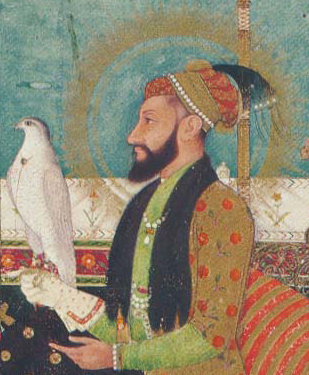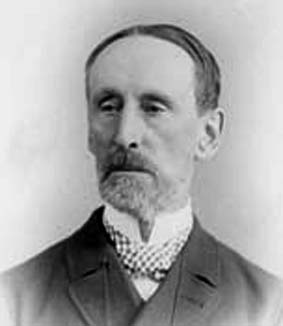Related Research Articles

The 1700s decade ran from January 1, 1700, to December 31, 1709.

1710 (MDCCX) was a common year starting on Wednesday of the Gregorian calendar and a common year starting on Sunday of the Julian calendar, the 1710th year of the Common Era (CE) and Anno Domini (AD) designations, the 710th year of the 2nd millennium, the 10th year of the 18th century, and the 1st year of the 1710s decade. As of the start of 1710, the Gregorian calendar was 11 days ahead of the Julian calendar, which remained in localized use until 1923.

1701 (MDCCI) was a common year starting on Saturday of the Gregorian calendar and a common year starting on Wednesday of the Julian calendar, the 1701st year of the Common Era (CE) and Anno Domini (AD) designations, the 701st year of the 2nd millennium, the 1st year of the 18th century, and the 2nd year of the 1700s decade. As of the start of 1701, the Gregorian calendar was 11 days ahead of the Julian calendar, which remained in localized use until 1923.

The Dean Cemetery is a historically important Victorian cemetery north of the Dean Village, west of Edinburgh city centre, in Scotland. It lies between Queensferry Road and the Water of Leith, bounded on its east side by Dean Path and on its west by the Dean Gallery. A 20th-century extension lies detached from the main cemetery to the north of Ravelston Terrace. The main cemetery is accessible through the main gate on its east side, through a "grace and favour" access door from the grounds of Dean Gallery and from Ravelston Terrace. The modern extension is only accessible at the junction of Dean Path and Queensferry Road.

Thomas Philip de Grey, 2nd Earl de Grey, 3rd Baron Grantham, 6th Baron Lucas, KG, PC, FRS, styled as The Hon. Thomas Robinson until 1786 and as Lord Grantham from 1786 to 1833, of Wrest Park in the parish of Silsoe, Bedfordshire, was a British Tory statesman. He changed his surname to Weddell in 1803 and to de Grey in 1833.

Earl Cowper was a title in the Peerage of Great Britain. It was created in 1718 by George I for William Cowper, 1st Baron Cowper, his first Lord Chancellor, with remainder in default of male issue of his own to his younger brother, Spencer Cowper. Cowper had already been created Baron Cowper of Wingham in the County of Kent, in the Peerage of England on 14 December 1706, with normal remainder to the heirs male of his body, and was made Viscount Fordwich, in the County of Kent, at the same time as he was given the earldom, also Peerage of Great Britain and with similar remainder. He was the great-grandson of William Cowper, who was created a Baronet, of Ratling Court in the County of Kent, in the Baronetage of England on 4 March 1642. The latter was succeeded by his grandson, the second Baronet. He represented Hertford in Parliament. He was succeeded by his eldest son, the aforementioned William Cowper, the third Baronet, who was elevated to the peerage as Baron Cowper in 1706 and made Earl Cowper in 1718. In 1706 Lord Cowper married as his second wife Mary Clavering, daughter of John Clavering, of Chopwell, County Durham.

James Ogilvy, 4th Earl of Findlater and 1st Earl of Seafield, was a Scottish politician.
The following is a list of people who have held the title of Lord Lieutenant of Montgomeryshire. After 1761, all Lord Lieutenants were also Custos Rotulorum of Montgomeryshire. The office was abolished on 31 March 1974 and replaced by the Lord Lieutenant of Powys, with Deputy Lieutenants for Montgomeryshire.

Morgan Crofton was an Irish mathematician who contributed to the field of geometric probability theory. He also worked with James Joseph Sylvester and contributed an article on probability to the 9th edition of the Encyclopædia Britannica. Crofton's formula is named in his honour.
Events from the year 1622 in England.
Events from the year 1692 in the Kingdom of Scotland.

Greyfriars Kirkyard is the graveyard surrounding Greyfriars Kirk in Edinburgh, Scotland. It is located at the southern edge of the Old Town, adjacent to George Heriot's School. Burials have been taking place since the late 16th century, and a number of notable Edinburgh residents are interred at Greyfriars. The Kirkyard is operated by City of Edinburgh Council in liaison with a charitable trust, which is linked to but separate from the church. The Kirkyard and its monuments are protected as a category A listed building.
References
- ↑ "Fellows of the Royal Society". London: Royal Society. Archived from the original on 2015-03-16.
- ↑ "DServe Archive Persons Show".
- ↑ "DServe Archive Persons Show".
- ↑ "DServe Archive Persons Show".
- ↑ "DServe Archive Catalog Show".
- ↑ "DServe Archive Persons Show".
- ↑ "DServe Archive Persons Show".
- ↑ "DServe Archive Persons Show".
- ↑ "DServe Archive Persons Show".
- ↑ "DServe Archive Persons Show".
- ↑ "DServe Archive Persons Show".
- ↑ "DServe Archive Persons Show".
- ↑ "DServe Archive Persons Show".
- ↑ "DServe Archive Persons Show".
- ↑ "DServe Archive Persons Show".
- ↑ "DServe Archive Persons Show".
- ↑ "DServe Archive Persons Show".